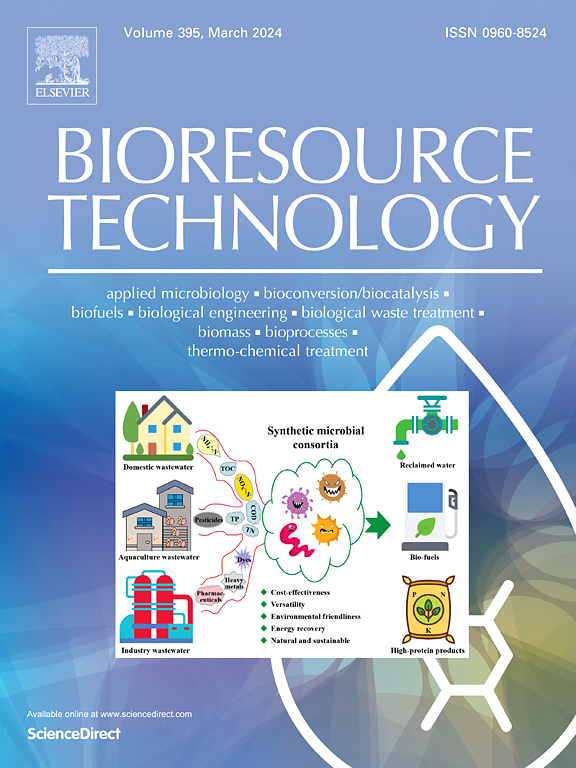从矿区分离原生细菌对稀土矿氨氮废水进行原位净化。
IF 9.7
1区 环境科学与生态学
Q1 AGRICULTURAL ENGINEERING
引用次数: 0
摘要
采用硫酸铵((NH4)2SO4)浸出法提取矿山稀土元素,产生了大量富含NH4+- n的矿体废水,造成了许多严重的环境污染问题。本研究首次建立了用分离的本地微生物原位处理矿体内外真实稀土废水的方法。结果表明,在分离的6株微生物菌株中,Citrobacter sp. X-9的NH4+-N去除率最高。此外,在Erlenmeyer烧瓶(250-mL)和生物反应器(10-L)条件下,微生物对矿体外稀土废水的NH4+-N去除率最高。此外,与其他模式相比,利用Citrobacter sp. X-9循环模式原位处理矿体内废水对NH4+-N的去除效果更好,表明所建立的原位处理方法是纯化稀土废水的潜在途径。本文章由计算机程序翻译,如有差异,请以英文原文为准。

In situ purification of ammonium nitrogen wastewater in rare earth mine by native bacteria isolating from original mining area
Ammonium sulfate ((NH4)2SO4) leaching method to extract rare earth elements (REEs) of mine has produced a large amount of NH4+-N-enriched wastewater derived from ore body, leading to many serious environmental pollution problems. This study was the first time to establish an in-situ treatment for real REEs wastewater outside and inside the ore body by an isolated indigenous microorganism. The results stated that Citrobacter sp. X-9 achieved the highest NH4+-N removal efficiency among the isolated six microbial strains. Moreover, the microbe to treat the REEs wastewater outside ore body gave the greatest NH4+-N removal efficiency under the optimized conditions in the Erlenmeyer flask (250-mL) and bioreactor (10-L). Furthermore, compared to the others’ modes, the in-situ treatment by cyclic mode with Citrobacter sp. X-9 possessed superior performance in NH4+-N removal efficiency for wastewater inside of ore body, showing that the established in-situ treatment was the potential approach for REEs wastewater purification.
求助全文
通过发布文献求助,成功后即可免费获取论文全文。
去求助
来源期刊

Bioresource Technology
工程技术-能源与燃料
CiteScore
20.80
自引率
19.30%
发文量
2013
审稿时长
12 days
期刊介绍:
Bioresource Technology publishes original articles, review articles, case studies, and short communications covering the fundamentals, applications, and management of bioresource technology. The journal seeks to advance and disseminate knowledge across various areas related to biomass, biological waste treatment, bioenergy, biotransformations, bioresource systems analysis, and associated conversion or production technologies.
Topics include:
• Biofuels: liquid and gaseous biofuels production, modeling and economics
• Bioprocesses and bioproducts: biocatalysis and fermentations
• Biomass and feedstocks utilization: bioconversion of agro-industrial residues
• Environmental protection: biological waste treatment
• Thermochemical conversion of biomass: combustion, pyrolysis, gasification, catalysis.
 求助内容:
求助内容: 应助结果提醒方式:
应助结果提醒方式:


